The GK100 are a treblehead’s dream, boasting exceptional technical and analytical prowess.
Many newcomers gush over gear with a high driver count, equating ‘more’ with ‘better’ sound. Seasoned audiophiles will opine that tuning and implementation trumps driver tally.
- Solid build, comfortable
- Good accessory spread
- Premium Hakugei cable has modular options to allow myriad source-pairing
- Above average isolation
- Exquisite technicalities
- Quite coherent despite an exotic mishmash of drivers
- Fastidious with source pairing
- Not for bassheads
- Treble-sensitive folk might find them bright
- Thin note weight, piezo zing in the higher frequencies
Today, we will put a nine-driver behemoth through their paces. Let’s read on to find out if the GK100 rustles all these premium ingredients into a cohesive nine-course gourmet feast!
Company Overview
Geek Wold is a small Chinese company; it is such a niche that it does not even have an online website. The brand is best known for the GK10 IEMs, with the GK3 and the GK80 also in the stable.
Technical Specifications
- Form: IEMs
- Drivers: 2 x balanced armature, 4 x piezoelectric, 3 x dynamic drivers (consisting of 1 x 8mm diamond-like carbon [DLC] diaphragm, 2 x 8mm dual cavity liquid-crystal polymer [LCP] diaphragm + composite titanium diaphragm drivers)
- Impedance (Ohm): 17Ω
- Sensitivity (dB): 105
- Frequency Response (Hz): 10Hz – 40kHz
- Removable Cable: Y
- Cable: 8-strand 6N single crystal copper silver-plated wire
- Source Plug: modular 2.5mm, 3.5mm, 4.4mm plugs
- Cup/Shell Plug: 0.78 mm 2-pin
Packaging
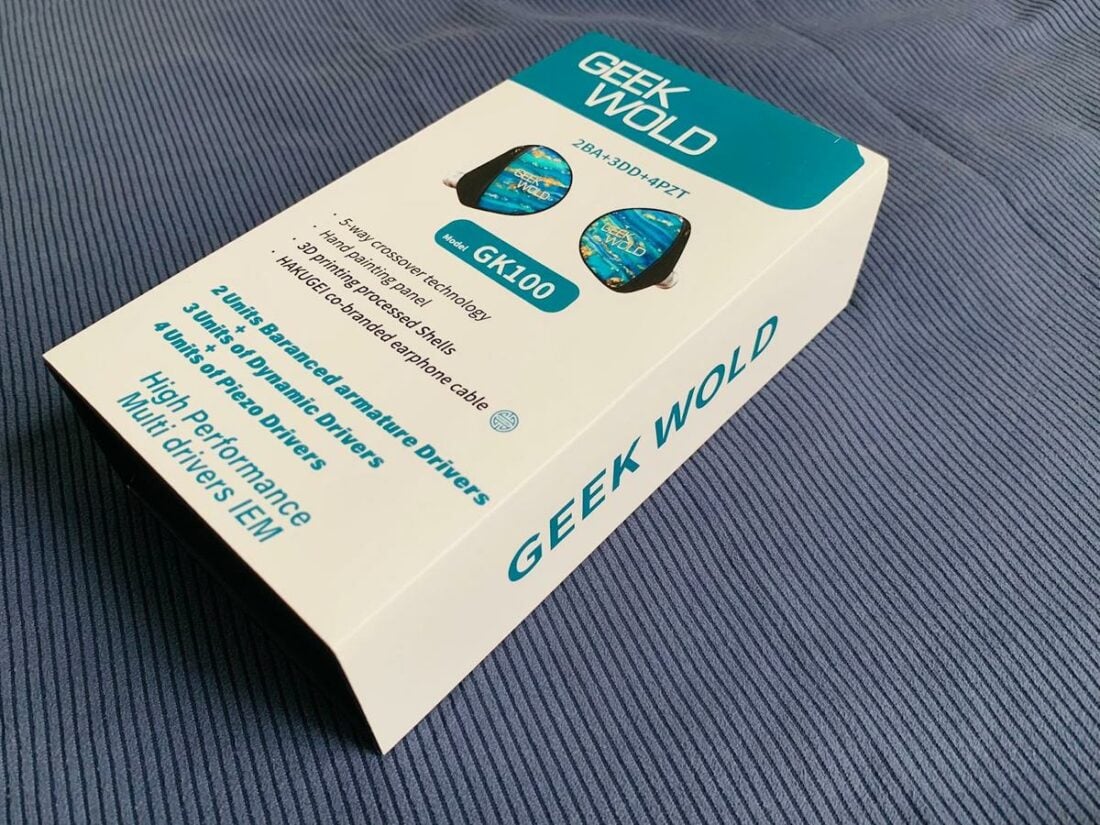
In the box
- Geek Wold GK100 IEMs
- 3 pairs of wide-bore silicone ear tips
- 3 pairs of narrow-bore silicone ear tips
- Cable with three modular plugs
- Carrying case
- Shirt clip
The included accessories are decent for a set priced around USD$200, other than a lack of foam tips.
I found the narrow-bore tips increase bass and compress the soundstage, whereas the wide-bore ones boost treble and expand the soundstage.

Cable
Geek Wold certainly did not skimp on the cable, providing a creation from renowned cable maker Hakugei. Said cable is thick, tangle-free, and well-braided, with minimal microphonics. There’s a chin cinch to give added stability.
This beautiful cable’s selling point is the modular termination at the proximal end, which allows the GK100 to be paired with 3.5mm (single-ended) and 2.5mm, and 4.4mm (balanced) sources.
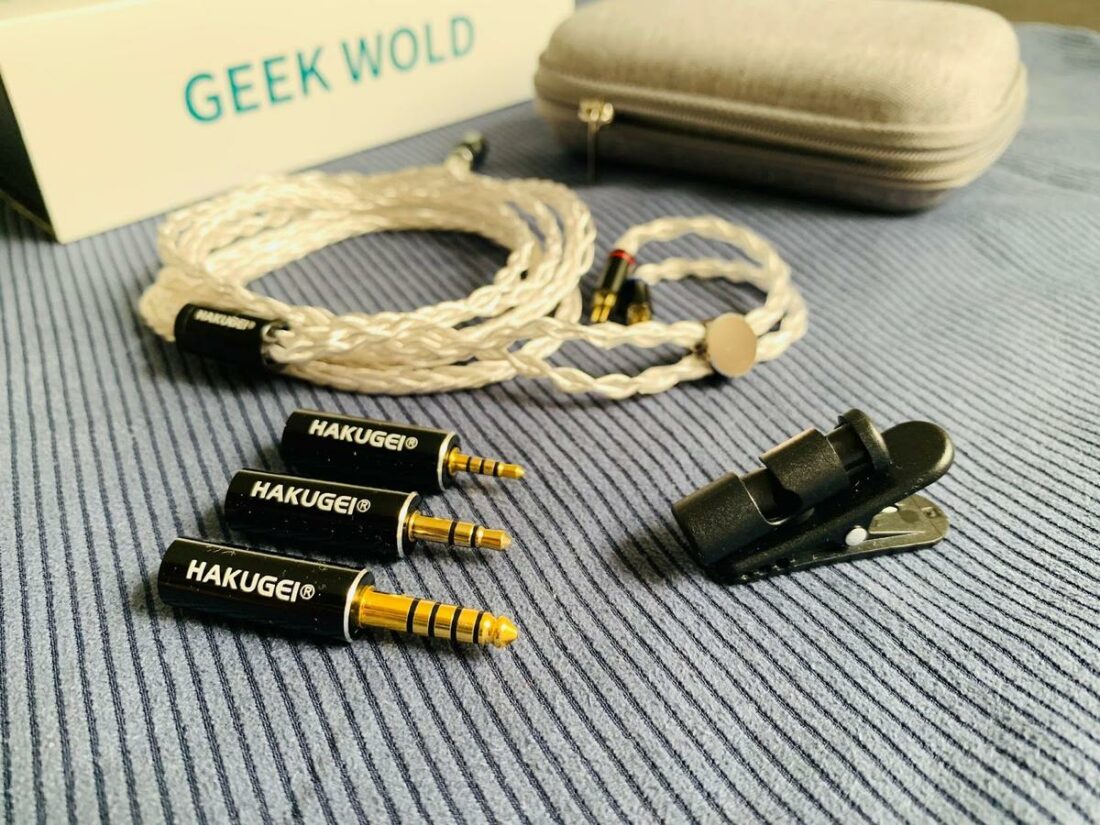
The shirt clip is helpful to pin the cable down to minimize microphonics or to prevent the cable from flailing about.
Case
A gray generic semi-rigid carrying case completes the accessory line-up.

Design
The GK100’s half-moon housings are fashioned from resin. The inner aspect is colored jet-black, whereas the faceplate has a marbled aquamarine pattern, with the Geek Wold logo emblazoned in gold.
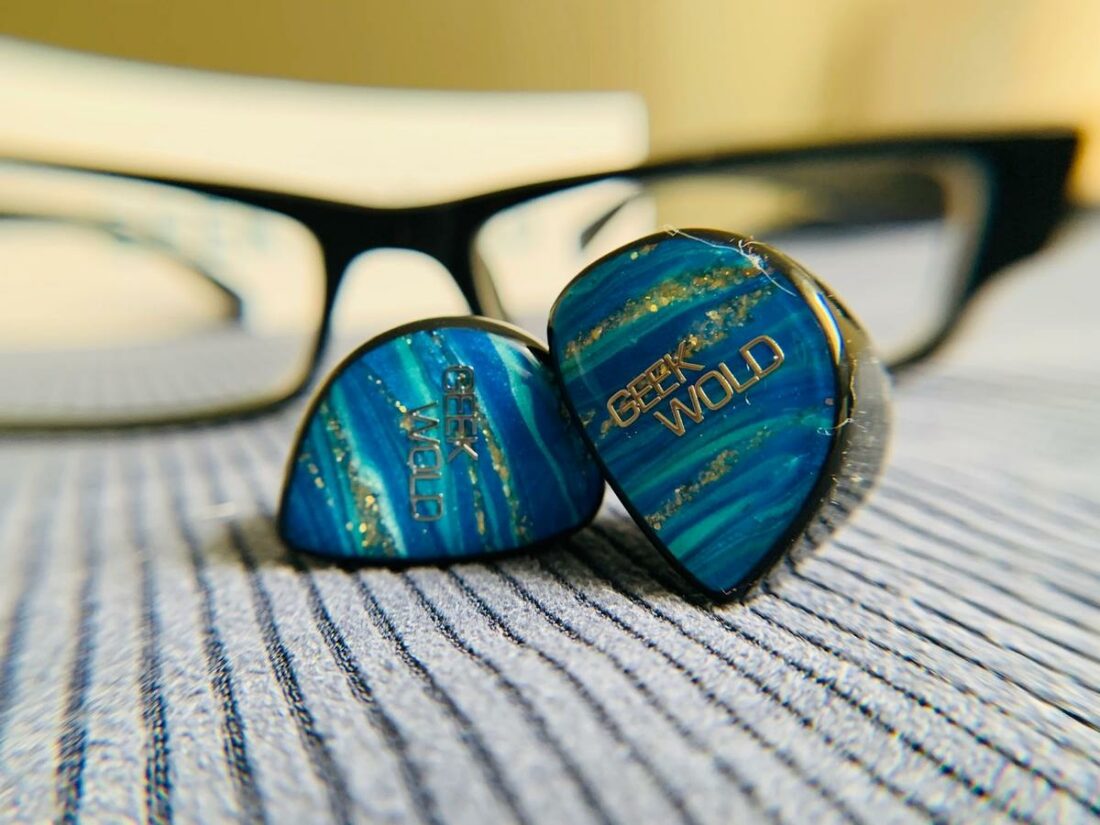
I’m pleased that the shells have 2-pin connectors, as I’ve found that MMCX jacks may weaken with frequent cable swaps.
Comfort
The GK100’s shells are ergonomically designed, with a small concha protrusion for increased grip. There are no irregular edges, and I encounter no discomfort despite using them for long listening sessions.
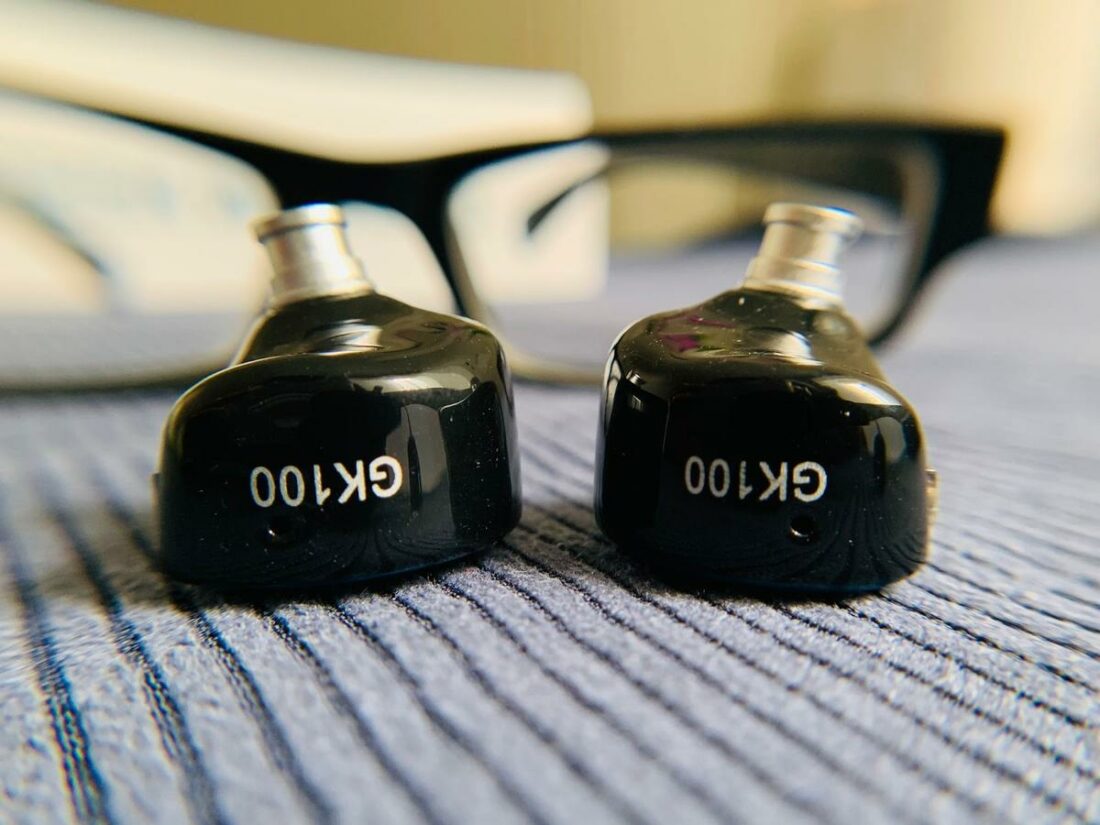
I did not encounter driver flex on my pair, but this may depend on the ear tips and your ear anatomy.
Despite being vented, the GK100 have above-average isolation.
Internals
As alluded to, the GK100 are a nine-driver quirky tribrid. A four-way crossover design is enforced to aid in coherency.
An 8mm dual-cavity coaxial design dynamic driver settles the low-end – this comprises a composite titanium diaphragm sub-bass woofer with an LCP diaphragm driver for the mid-bass.
An 8mm DLC dynamic driver covers the midrange frequencies.
The lower treble is managed by two composite balanced armature drivers in tandem with two 8mm piezoelectric drivers. The upper treble is entrusted to a duo of piezoelectric tweeters.
Geek Wold GK100 Sound
The GK100 are moderately easy to drive. However, source matching is very critical, as the three DDs require some juice for dynamics, but providing too much power might provoke harshness from the piezoelectric drivers.
The sweet spot for best sonics is with just slight amplification.
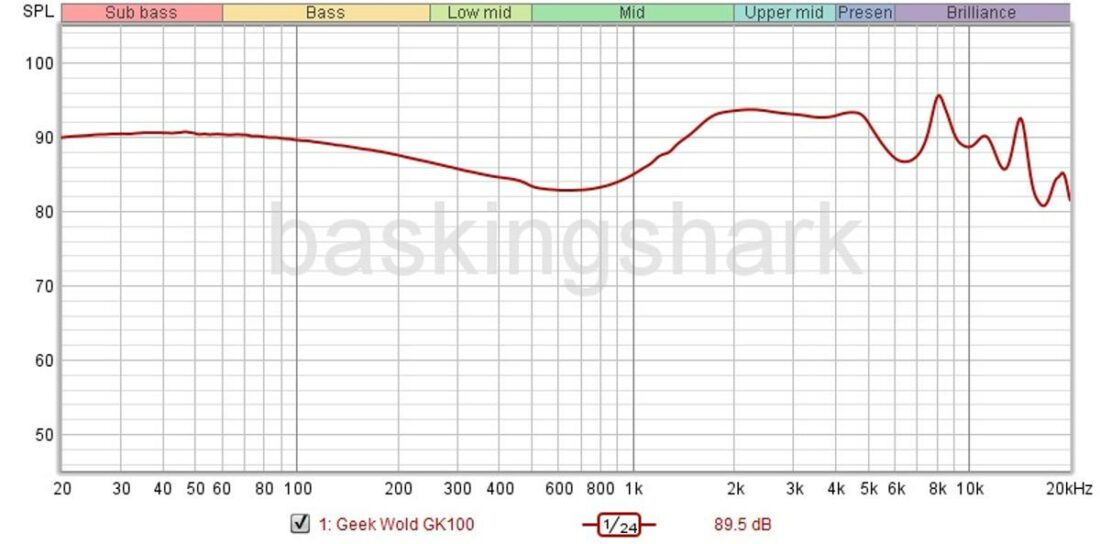
The GK100 are an analytical and hyper-detailed neutral bright pair of IEMs. The keyword for the GK100 would be “transparent.”
Technicalities are the GK100’s crowning glory, and they are arguably class-leading for something near the USD$200 price point.
The four piezoelectric drivers bring excellent treble extension and sparkle with lightning-quick transients. The GK100 have globs of micro-details, and the soundstage is expansive in all three dimensions. Imaging and instrument separation are top-notch; one can pinpoint instruments distinctly on a dark background.
Like their brand name, the GK100 are one for analytical geeks.
Be it the aftermath twang of a plucked bass string, guitar fretboard squeaks, ghost hits on cymbals, or even audience-generated sounds, these and other minute nuances can actually be heard on the GK100!
The GK100 are kings when it comes to complex riffs; they handle difficult tracks with aplomb, with pockets of space carved out for competing instruments.
These IEMs present all the flaws in the music – poorly recorded music will be portrayed as such.
Coherency is surprisingly decent, with the triple DDs keeping up with the nimble BAs and piezoelectric drivers operating at the higher frequencies.
When it comes to organic playback, you may not find the GK100 the most “musical.”
Note weight is thin, with a lack of meat in the bones. Vocals can come across as nasal. While acoustic instrument timbre is decent, there is a piezo zing, which is unsurprising when piezoelectric transducers are used.
Bass
Bass is a tinge north of neutral, with a lack of rumble and sub-bass extension. To be frank, bassheads best consider other options.
However, the midbass is punchy, fast, and clean, with no mid-bass bleed. Texturing is good, and the GK100 goes for bass quality over quantity.
Midrange
The lower midrange is a tinge depressed, and after that the upper mids are boosted with a 9dB pinna gain. Overall, the upper mids are at the edge of being forwards but not overtly shouty, allowing vocals to be in the front row.
There’s no mid-bass bleed to infringe on the midrange, so this frequency band is very clear, with distinguished layering on show.
Treble
The treble is very extended with lots of air and clarity, providing outstanding resolution and superb detail retrieval. Unfortunately, there’s sibilance, and cymbals and high hats can be splashy.
Trebleheads will be delighted, though the same cannot be said for treble-sensitive folk. Having said that, the treble can be tamed with EQ or sibilance damping tips, such as Final E black tips or foam tips, or even via a warmer source.
As per the Fletcher Munson curve, playing the GK100 at low to moderate volumes is optimal. At higher volumes, the treble and upper midrange may be overly emphasized, giving rise to fatigue.
With stellar technical chops on display, the GK100 make an astute option for stage monitoring, critical listening, or audio work.
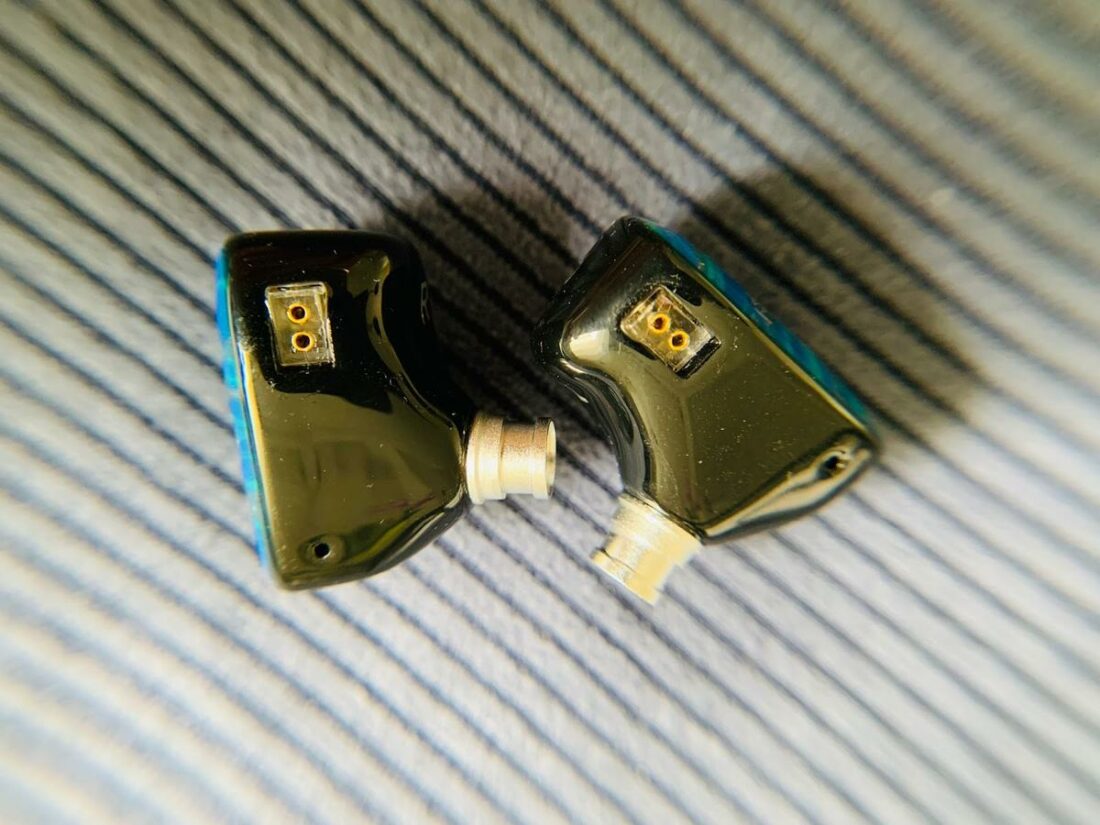
Comparisons
I will compare the GK100 against other similarly priced gear that utilize piezoelectric drivers. Single DDs, planars, and multi-BA types are omitted, as the different transducer types have their own pros and cons.
Vs. LZ A7
The LZ A7 also feature a hodgepodge of BAs, DDs, and piezoelectric drivers.
The A7 are definitely more versatile, offering ten different sonic profiles because each earpiece has tuning switches and screw-on nozzles to change the signature.
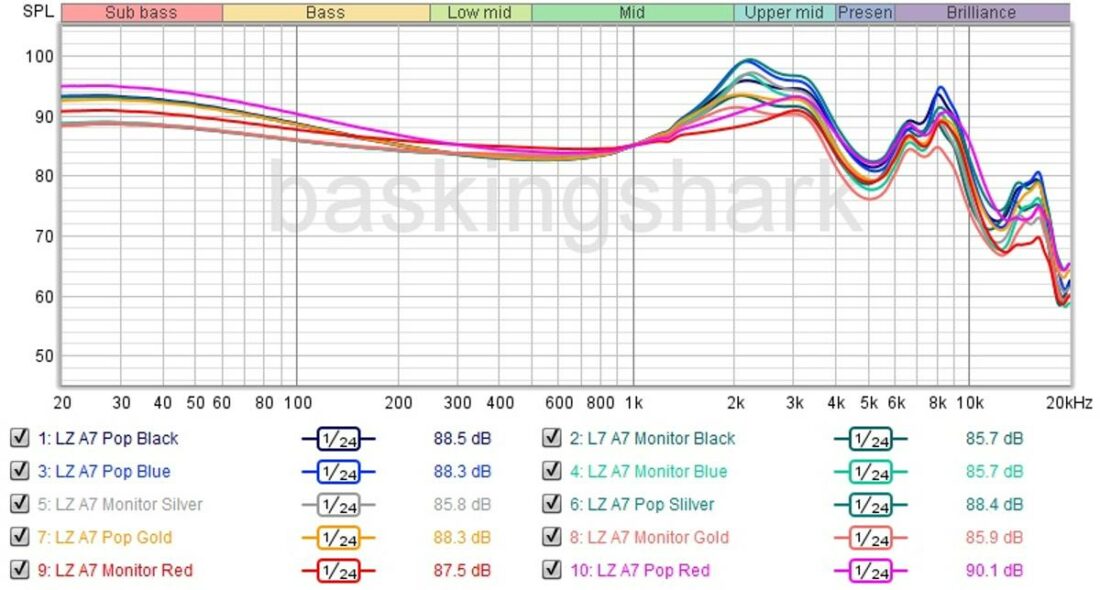
Essentially, the A7 can be tuned from V-shaped to neutral to basshead (L-shaped), whereas you are stuck with just one sonic profile on the GK100.
The LZ A7 are no slouch in the technicalities department, but they lose out to the GK100 when it comes to soundstage, imaging, instrument separation, edge definition, and micro-detailing.
The LZ A7 have a more natural timbre with a thicker note weight. The A7 are also easier to drive.
Vs. BQEYZ Winter
The Winter employ a DD with an 11.6mm piezoelectric bone conduction driver handling the upper frequencies.
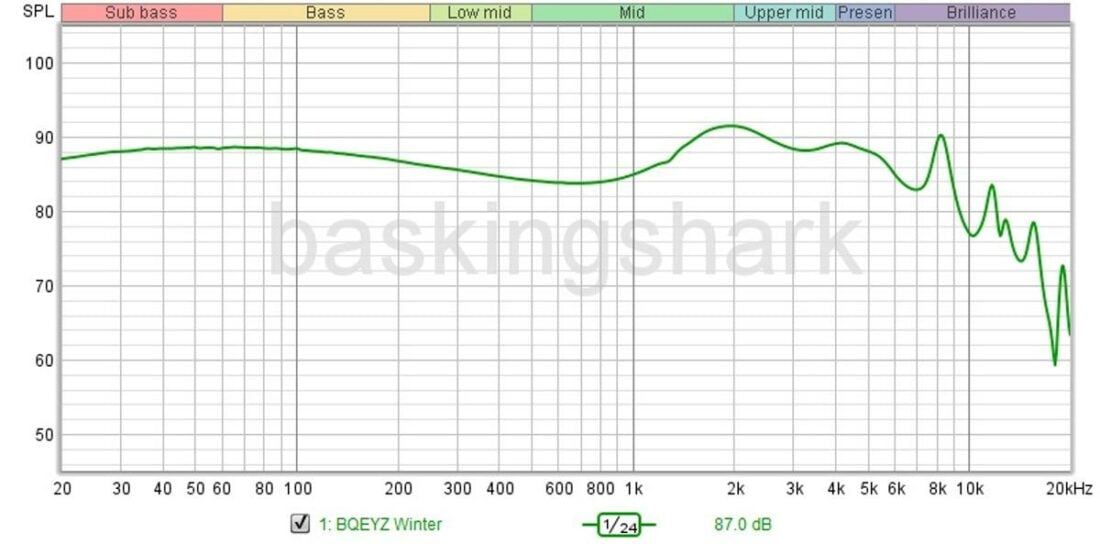
The Winter are similarly neutral bright in tuning, though they fare worse in technicalities than the GK100, with the latter having superior imaging, micro-detailing, clarity, and instrument separation.
The Winter are easier to drive, though they have weaker isolation.
Where to Buy
Conclusion
First-rate technicalities capable of delicate subtlety grace the GK100’s soundscape, allowing users to evaluate minutiae in the music!
The GK100 fit well and come with premium accessories – particularly a modular Hakugei cable offering various single-ended and balanced modular plugs.
Trebleheads will undoubtedly fall in love with this set due to the expansive air and sparkle provided by the four piezoelectric drivers. Additionally, the GK100 will make fine stage monitors, or audio work tools, given their terrific sonic fidelity and above-average isolation.

It has to be emphasized that the GK100 won’t be everyone’s cup of tea. They lie on the sterile side of the equation and are not the most “musical” sounding. Treble-sensitive folks should try before they buy, and they likely aren’t a basshead’s first choice or those yearning for a thicker and lusher sound.
I scour the earth for suitable IEMs for stage monitoring and studio work, and gear that provides such technical adroitness usually costs more than the near USD$200 list price of the GK100. It is truly amazing how far the industry has come in recent years, and if geeking out to technicalities is your thing, the GK100 will certainly not disappoint!
